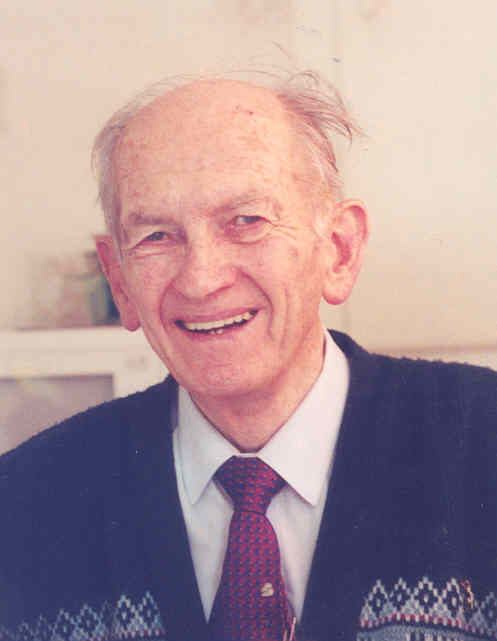Died 1 January 2005 | ||
 | ||
Books The Irish Faction Fighters of the 19th Century Similar Hugo O'Donnell - 7th Duke, Arthur Griffith, Cathal Brugha | ||
Patrick Denis O'Donnell (9 January 1922 – 1 January 2005) was an Irish military historian, writer, former UN peace-keeper, and Commandant of the Irish Defence Forces.
Contents
Background
He was born in the Kerries Tralee, County Kerry, only child of Denis O'Donnell, and Hannah Leane, and was also known as "Paddy" or "P.D.". He was a direct descendant of John O'Donnell of Ardfert, and descended from an O'Donnell of Tyrconnell, following on the implantation of O'Donnells in Ardfert by Prince Hugh Roe O'Donnell en route to the Battle of Kinsale in 1601, as recorded in the Annals of the Kingdom of Ireland. He married Stephanie Sarah Teresa Tyndall in 1952, daughter of David P. Tyndall and Sarah née Gaynor, and they lived in Fingal, north Dublin. They had three children, Frank (see Francis Martin O'Donnell), Sally, and Nola. He was a cousin of Maurice Gerard Moynihan, with shared interests in historical matters.
Education
He was educated in Tralee Christian Brothers Schools and joined the Irish Army in 1940. He successfully completed management and psychology courses at the School of Management at Rathmines Technical School. He graduated from the Irish Military College in the Curragh, and was commissioned in 1943. He also graduated from the Infantry School on 13 April 1949, with distinction. Later he attended the Public Relations Institute of Ireland in the early 1960s, and conducted public relations campaigns for the visit of US President John F. Kennedy to Ireland in 1962
Military career
He served during the "Emergency" as the period of the Second World War was known in then-neutral Ireland. He served briefly, with commendation, as a United Nations Military Observer with the United Nations Truce Supervision Organisation for Palestine (UNTSO), during the years 1965–1967, successively in Jerusalem, Tiberias, and Damascus.
Later, he held senior responsibilities in the Observer Corps (the Irish Army's unit for mitigation and preparedness in the event of nuclear war), military intelligence, and border security. An amateur artist in his spare time, he designed the insignia of the 5th Infantry Battalion. He rose to the rank of Commandant (Major) before retirement. He was awarded the United Nations Medal by the United Nations Secretary-General on 30 November 1965, and the United Nations Peacekeepers Medal by the Irish Government in 1991, in recognition of his service in the cause of world peace.
Historical interests
He was keenly interested in Irish and Middle Eastern history and was a member of the O'Donnell Clan Association. He was very active in O'Donnell Clan research for many decades, and at one time represented the Irish Defence Forces and the Military History Society in these matters. He frequently corresponded also with the Spanish and Austrian members of the clan of the O'Donnells of Tyrconnell. Of note, he also wrote a published series on the history of military barracks in Ireland, and lectured at the Old Dublin Society. He also researched Theobald Wolfe Tone's death, discovered his tomb, and published several articles on evidence that it was an assassination rather than suicide.
In 1980, he also published the first Map of the War of Independence, showing ambushes, raids, burnings and other incidents in the early 1920s. He wrote several series on topics of American military history. Some of his written material on military technology has been used for instructional purposes at the US Armed Forces Staff College in Norfolk, Virginia. In December 1994, he presented his military memorabilia and artefacts to the National Museum of Ireland. (Evening Press, 20 December 1994)
He also wrote on Irish non-military history including legends of famous castles such as Castlemartin and Ballyheigue, where a tale of a ghostly appearance was picked up later by the American expert on the paranormal, Hans Holzer, in his book The Lively Ghosts of Ireland. He was best known abroad for his book The Irish Faction Fighters of the 19th Century, (published by Anvil Books, Dublin, 1975), a sociological analysis of rural inter-clan feuding, and its exploitation as a form of control to contain rising agrarian agitation in the 19th century in Ireland.
He was frequently consulted as an authority on various historical matters, and was often cited at home and abroad in other works. He wrote over 1,000 articles and was a frequent contributor to leading Irish newspapers and periodicals, including An Cosantóir, the journal of the Irish Army, and The Irish Sword, the journal of the Irish Military History Society. He was a member of many associations (PEN/writers, Public Relations Institute of Ireland, the US President John F. Kennedy Association). He also held the position of Hereditary Lord Steward for Tyrconnell, with prerogatives as deputy to the Lord High Steward of Ireland (Great Seneschal of Ireland) and also succeeded to an Irish territorial barony, Fingal originally dating back to a grant by King John in 1208 and a related manorial lordship, Fyngallestoun. He was also a member of the Knights of St. Columbanus, and of the lay Third Order of the Dominicans, and also received the Silver Cross of Honour of Jerusalem.
Selected works
Tributes
Patrick Denis O'Donnell died in Beaumont Hospital, Dublin, after a long illness, and his remains were interred in Glasnevin Cemetery, following a funeral with military honours and a pall-bearer party from the 5th Infantry Battalion, whose insignia he designed, and in the presence of the Chief of Staff, Lt. General James Sreenan, and accompanied by surviving family members, relatives and friends.
